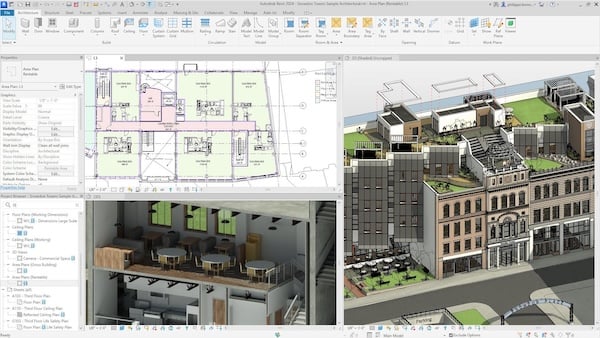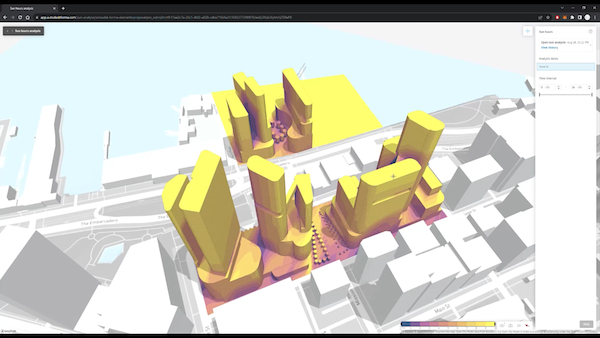While civil engineering organizations have been busy with abundant workloads in recent years, there are still some significant challenges to navigate. According to a 2024 survey of civil engineering principals and CAD professionals by Cadalyst and IMAGINiT Technologies, companies are seeking ways to retain talent, increase productivity, apply new technology, and train staff. In this report, we gather and present the issues indicated by the survey responses, along with our conclusions and recommendations.
Much of the growing civil engineering workload can be traced to federal funding from the $1.2 trillion Infrastructure Investment and Jobs Act (IIJA) approved in 2021. While some funds have not trickled down to state and local levels as fast as some hoped, additional infrastructure work is definitely taking shape. According to a September 2024 U.S. Department of Transportation fact sheet, more than $480 billion in funding has been announced for more than 60,000 projects and awards in all 50 states, plus Washington D.C., and U.S. territories.

Image Source takahiro/stock.adobe.com.
In addition to funding specific construction projects, the IIJA has also earmarked funds for advancing technology and innovation, in areas such as smart transportation systems, digital transformation, automation, and artificial intelligence — areas where civil engineering has historically lagged behind other industries. As such, firms may find that applying technology can also help address heavy workloads and staffing challenges.
“Technology empowers businesses to achieve what’s impossible today and unlocks efficiencies to accomplish more with fewer resources,” said Kevin Breslin, Manager of Infrastructure Solutions Division Services at IMAGINiT Technologies.”
Attracting and Retaining Talent
When we asked respondents about the biggest challenge faced by their organization, over 40% of survey respondents cited staffing and talent retention.
What is the biggest challenge your organization faces today?
Following closely was the challenge of implementing new technologies, at approximately 20%. It’s clear organizations are concerned with attracting and keeping staff to complete the work facing them.
Here’s where it gets even trickier: nearly 74% of respondents said experienced designers were most difficult to find, followed by 3D modeling and BIM experts at approximately 53%. Non-technical skills such as communication landed in third place, followed by project management, programming and automation, sustainability, data management, and artificial intelligence.
What skills are the most difficult to find when hiring new employees?
Seeking More Productivity
Organizations aren’t just focused on hiring — they’re also pursuing ways to become more productive with the staff they have. Over 70% of survey respondents said optimizing workflows is a priority for the next year. Enhanced employee training, automation of repetitive tasks, improved collaboration, and implementation of new software were also identified as priorities in improving productivity.
Interestingly, many firms pointed out that their work environment plays a big role in productivity. Maintaining consistent design standards was a common challenge, along with onboarding, training, and collaboration. These responses indicated a strong relationship between staffing concerns and productivity goals.
Does your organization have a formal disaster recovery/business continuity plan?
Along with productivity issues, organizations were asked if they have a plan for disaster recovery or business continuity. More than 40% of respondents said they were either unsure or did not have such a plan. While not a pleasant scenario to consider, organizations would be wise to develop a recovery plan if none exists, as productivity could grind to a halt if a disaster occurs.
Applying Technology as a Solution
When it comes to addressing staffing and productivity issues, technology plays a big role. Experts agree digital transformation — the process of integrating digital technologies to improve business outcomes — is key. When manual processes are converted to digital process, productivity can improve and employees feel more empowered, as technology can relieve employees of tedious tasks and free them up for more creative, judgment-oriented work.
That said, civil engineering firms have room for improvement in achieving digital transformation. When asked how satisfied they are with their organization’s current digital transformation efforts, respondents gave themselves an average of 3.4 on a scale of 1 to 5.
Regarding barriers to further digital transformation, respondents identified issues such as employee skills gaps, legacy systems, lack of management buy-in, and budget constraints.
Again, some of the industry challenges appear intertwined. By using technology to improve productivity, organizations can also address staffing challenges, though they may need to tap outside resources to implement new technology.
What are your top priorities for improving productivity over the next year?
“At most firms, the current staff doesn’t have the bandwidth or skill sets to implement new technology,” said Alan Morse, Vice President of AECO Sales in North America for IMAGINiT Technologies. “New technology can be a leveraging tool to help these organizations retain staff and also entice individuals who want to come work for them.”
What challenges does your current work environment create?
As an example of converting manual processes to digital processes, organizations that design grading projects such as subdivisions and site plans are finding value in new tools such as Autodesk’s Grading Optimization. Working in conjunction with Civil 3D grading objects, the tool uses optimization algorithms to iterate through multiple design scenarios and achieve desirable surface outcomes based on user-imposed constraints.
Based on the survey, organizations are also interested in adding new technology-based services, such as GIS data integration and LiDAR scanning. Technology is becoming increasingly accessible in these areas, with tools such as the Autodesk Connector for ArcGIS integrating BIM and GIS workflows.
What do you see as the biggest barrier to further digital transformation in your organization?
Another technology attracting interest is artificial intelligence (AI), though survey respondents did not have a clear path forward in implementing AI.
While a small percentage (6%) are already implementing AI, more than 68% of respondents said they were either somewhat or not very prepared in AI, with 26% having no interest in AI at this time. Potential AI applications included automated drafting and modeling, scheduling, generative design, and cost estimation.
Some of these applications overlap with automation techniques that are not necessarily employing AI, such as scripting and programming in CAD and BIM environments.
In a separate series of articles, we discuss how to get started with AI — how to evaluate your readiness for AI and how to prepare for AI implementation.
How prepared is your organization to implement AI technologies?
Data sharing is still a challenge for many organizations. More than 45% of respondents listed email as the most common way they shared data, which is cause for concern. In addition to presenting file size limitations, email data sharing inhibits collaboration and real-time project updates. Organizations can improve productivity and achieve numerous other benefits by switching to a more current project management platform using cloud-based technology. “The world of project collaboration and cloud-based technology has come a long way in recent years,”
noted Breslin.
What potential AI applications are you most interested in exploring?
He cited Autodesk Construction Cloud (ACC) as an example of a cloud-based environment and Autodesk BIM Collaborate Pro as a cloud-based tool working within ACC to help teams organize project data and collaborate on designs using Civil 3D and Revit.
What is the most common way you share project data with clients?
Training is Critical
A common theme throughout the survey was the importance of employee training. As noted earlier in this article, training was identified as a key in both improving productivity and implementing new technologies. Inadequate training was identified as a barrier to implementing new technology and can also hinder employee morale, which in turn affects staff retention.
Types of training provided by responding firms varied, with in-house training and vendor-provided training the most prevalent. Organizations that do not invest in training often face more issues with staff turnover or introducing new technologies, according to Morse. “Staff is hungry for training,” he said. “The question is how to make it beneficial to both staff and leadership.”
What types of training does your organization provide to employees?
A productive training program is generally one tailored to a firm’s needs, considering staff makeup, work types, business and technology objectives, and numerous other factors. An experienced partner such as IMAGINiT Technologies can help you develop training programs to address challenges facing the industry as a whole, as well as challenges specific to your firm.
Along with a robust training program, organizations need an overall plan to implement new technology and address pressing challenges. IMAGINiT has a team of 180 people with decades of experience assisting clients with identifying and implementing technology solutions to achieve specific goals. Whether it’s introducing new products, automating processes, optimizing workflows, or developing training programs, a partner such as IMAGINiT can help organizations apply technology to retain talent, increase productivity, and prepare for new challenges.
Download this article as a whitepaper here.
***
This article was sponsored by IMAGINiT Technologies.






Searching for more information about Architecture, Infrastructure, and Construction?
Click here!